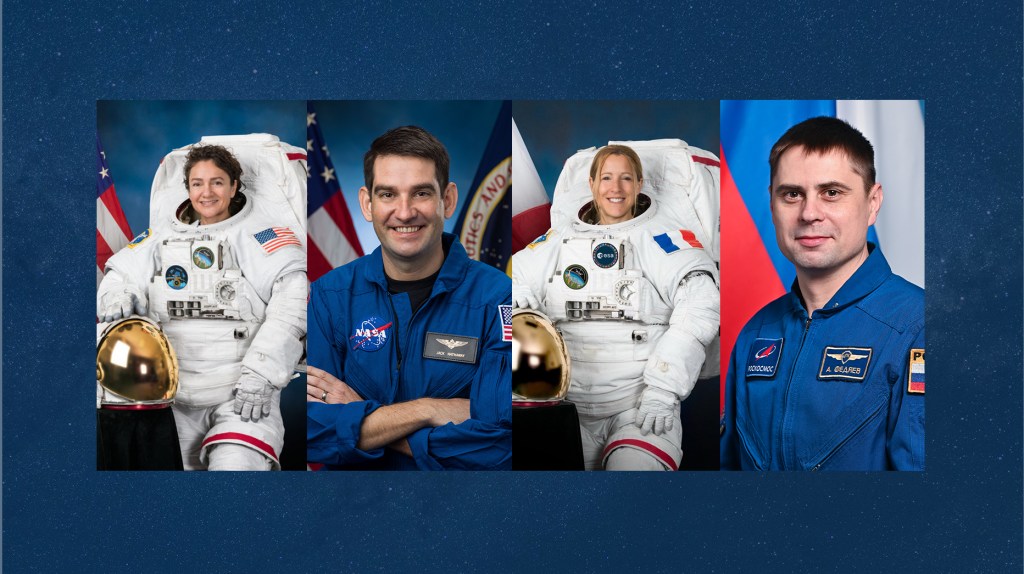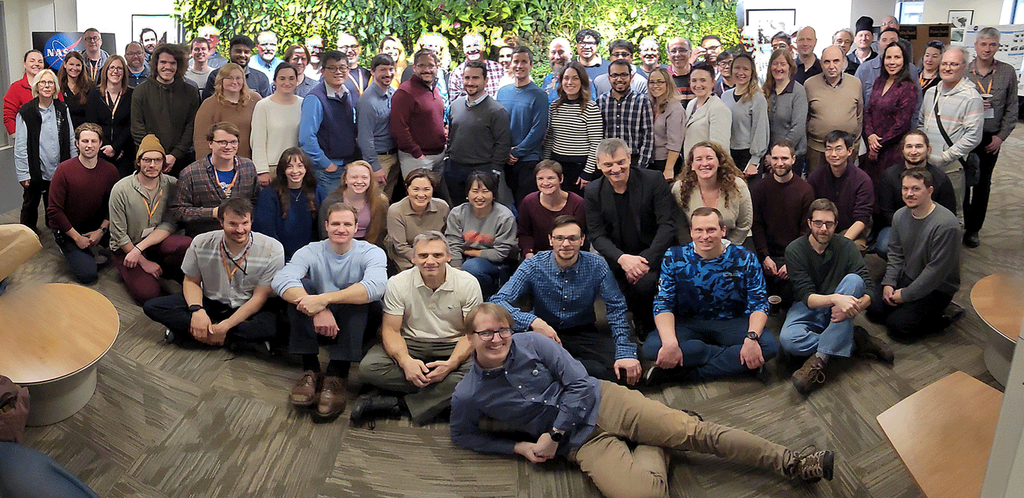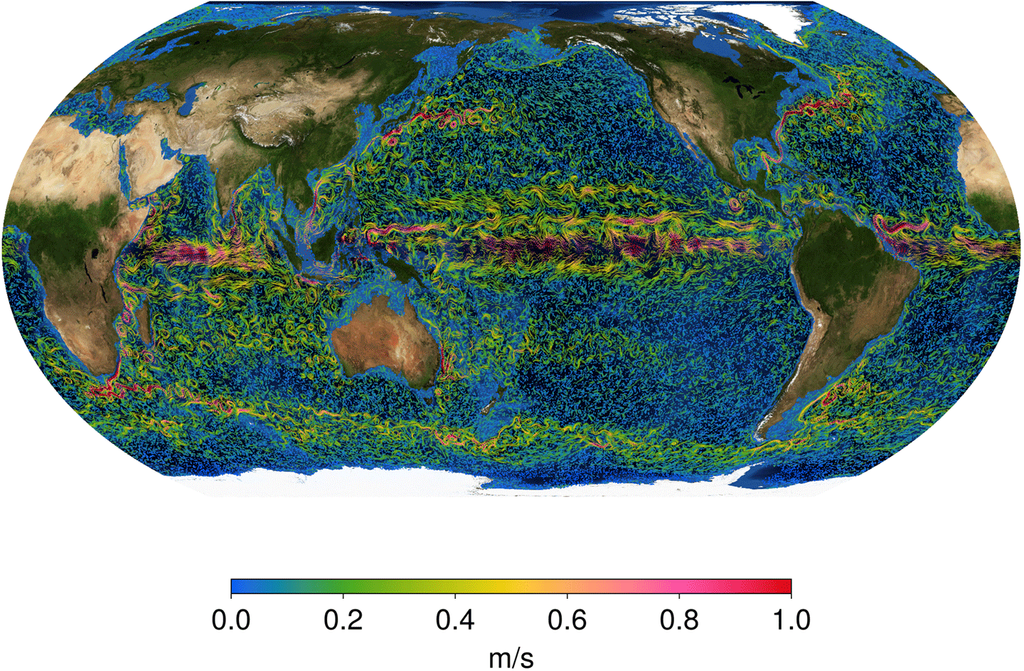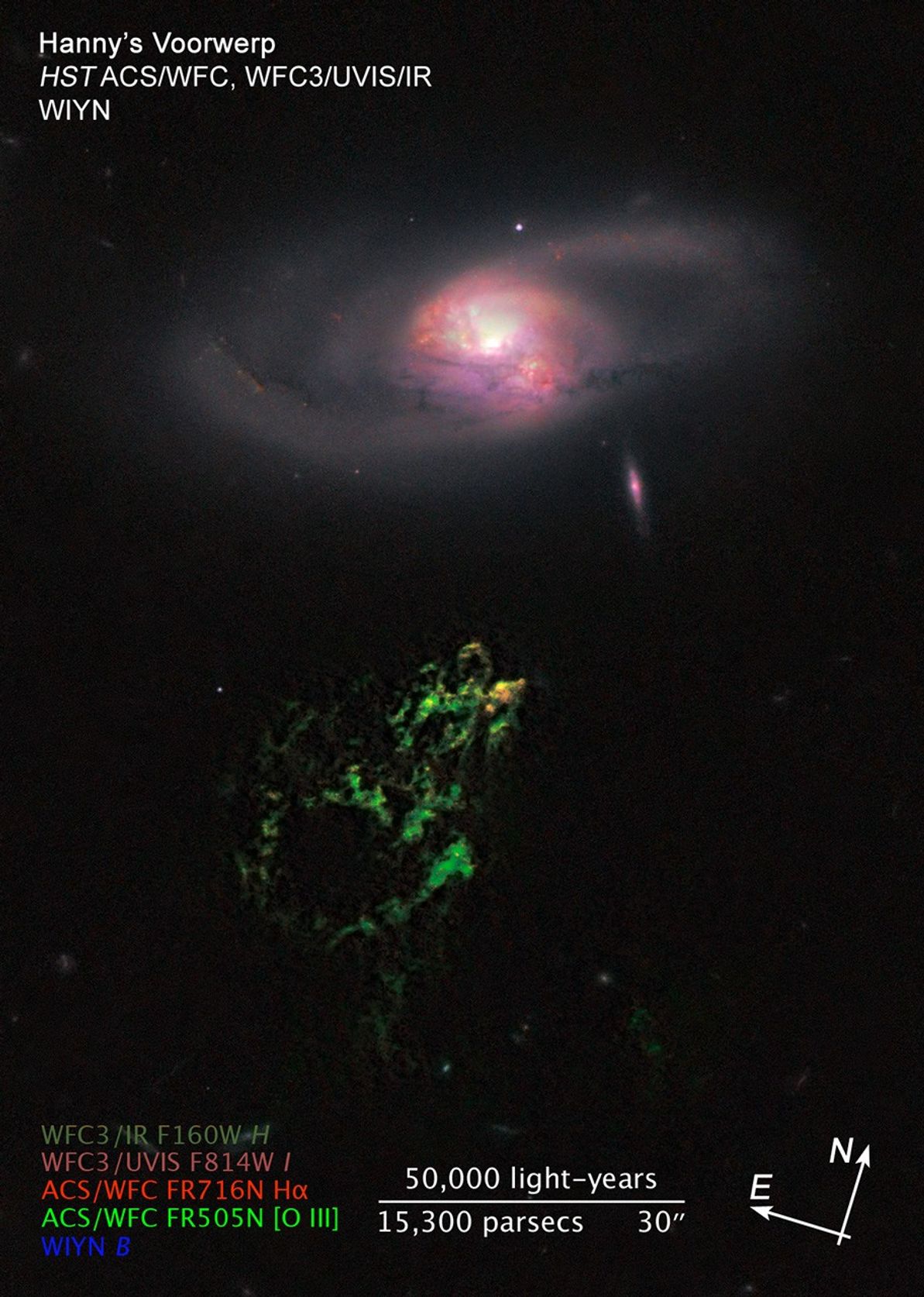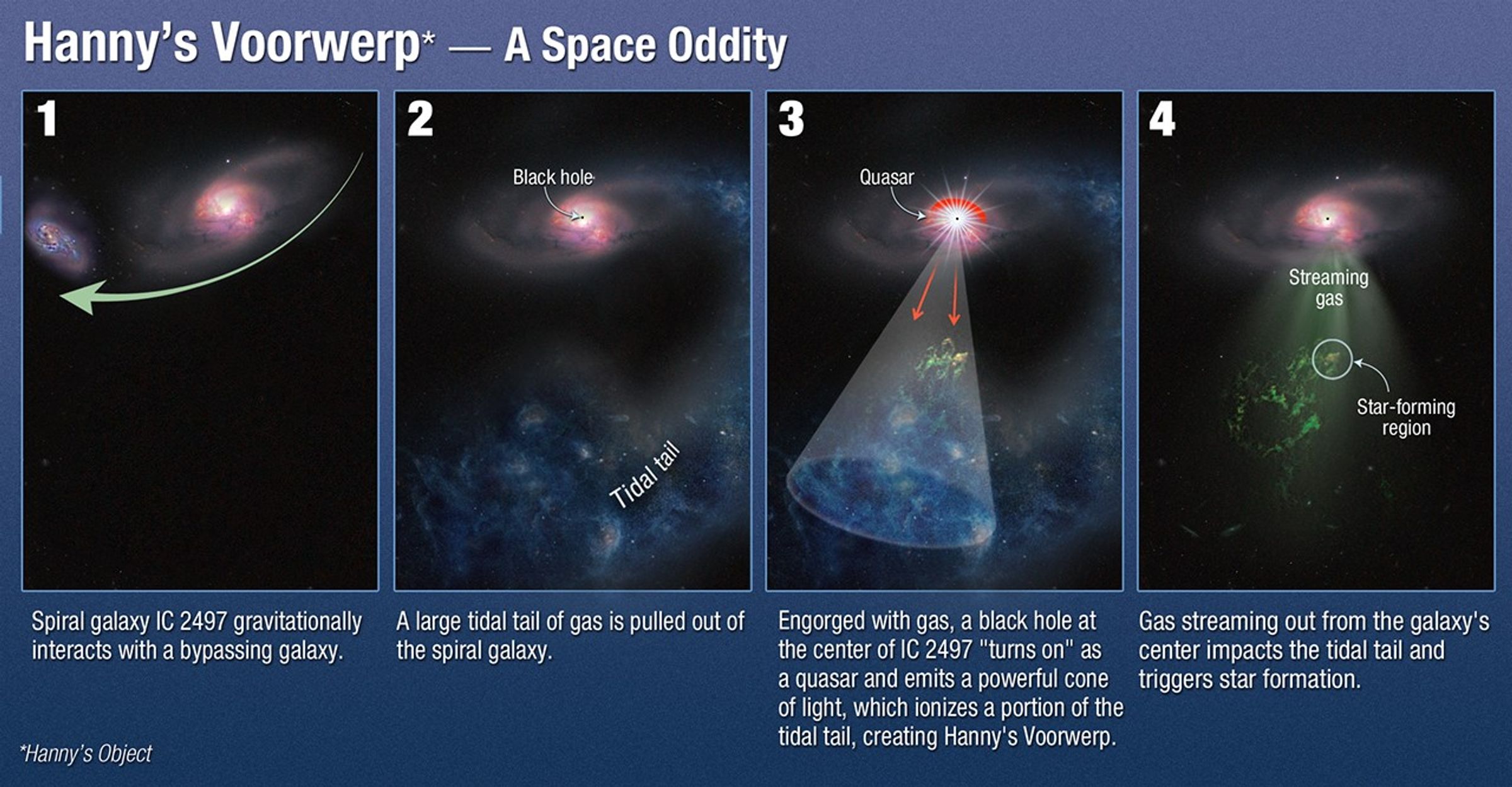1 min read
Hubble Snaps Image of Space Oddity

In this image by NASA's Hubble Space Telescope, an unusual, ghostly green blob of gas appears to float near a normal-looking spiral galaxy.
The bizarre object, dubbed Hanny's Voorwerp (Hanny's Object in Dutch), is the only visible part of a 300,000-light-year-long streamer of gas stretching around the galaxy, called IC 2497. The greenish Voorwerp is visible because a searchlight beam of light from the galaxy's core illuminated it. This beam came from a quasar, a bright, energetic object that is powered by a black hole. The quasar may have turned off about 200,000 years ago.
This Hubble view uncovers a pocket of star clusters, the yellowish-orange area at the tip of Hanny's Voorwerp. The star clusters are confined to an area that is a few thousand light-years wide. The youngest stars are a couple of million years old. The Voorwerp is the size of our Milky Way galaxy, and its bright green color is from glowing oxygen.
Hubble also shows that gas flowing from IC 2497 may have instigated the star birth by compressing the gas in Hanny's Voorwerp. The galaxy is located about 650 million light-years from Earth.
What appears to be a gaping hole in Hanny's Voorwerp actually may be a shadow cast by an object in the quasar's light path. The feature gives the illusion of a hole about 20,000 light-years wide. Hubble reveals sharp edges but no other changes in the gas around the apparent opening, suggesting that an object close to the quasar may have blocked some of the light and projected a shadow on the Voorwerp. This phenomenon is similar to a fly on a movie projector lens casting a shadow on a movie screen.
An interaction between IC 2497 and another galaxy about a billion years ago may have created Hanny's Voorwerp and fueled the quasar. The Hubble image shows that IC 2497 has been disturbed, with complex dust patches, warped spiral arms, and regions of star formation around its core. These features suggest the aftermath of a galaxy merger. The bright spots in the central part of the galaxy are star-forming regions. The small, pinkish object to the lower right of IC 2497 is an edge-on spiral galaxy in the background.
The image was made by combining data from the Advanced Camera for Surveys (ACS) and the Wide Field Camera 3 (WFC3). The ACS exposures were taken April 12, 2010; the WFC3 data, April 4, 2010.
About the Object
- R.A. PositionR.A. PositionRight ascension – analogous to longitude – is one component of an object's position.09h 41m 3.79s
- Dec. PositionDec. PositionDeclination – analogous to latitude – is one component of an object's position.34° 43' 34.2"
- ConstellationConstellationOne of 88 recognized regions of the celestial sphere in which the object appears.Leo Minor
- DistanceDistanceThe physical distance from Earth to the astronomical object. Distances within our solar system are usually measured in Astronomical Units (AU). Distances between stars are usually measured in light-years. Interstellar distances can also be measured in parsecs.65 million light-years (20 million parsecs)
- DimensionsDimensionsThe physical size of the object or the apparent angle it subtends on the sky.This image is 90 arcseconds (150,000 light-years or 46,000 parsecs) wide.
About the Data
- Data DescriptionData DescriptionProposal: A description of the observations, their scientific justification, and the links to the data available in the science archive.
Science Team: The astronomers who planned the observations and analyzed the data. "PI" refers to the Principal Investigator.The image was created from Hubble data from proposal 11620: W. Keel (University of Alabama, Tuscaloosa), C. Lintott (University of Oxford), K. Schawinski (Yale University), N. Bennert (University of California, Riverside), D. Thomas (University of Portsmouth), and H. van Arkel (Netherlands). Note: Hubble imaging data were combined with the Kitt Peak National Observatory's 3.5-meter Wisconsin-Indiana-Yale-NOAO (WIYN) telescope data in blue light. Image courtesy of WIYN/W. Keel/A. Manning. - InstrumentInstrumentThe science instrument used to produce the data.WIYN, HST>ACS/WFC, HST>WFC3/UVIS, and HST>WFC3/IR
- Exposure DatesExposure DatesThe date(s) that the telescope made its observations and the total exposure time.April 4 and 12, 2010
- FiltersFiltersThe camera filters that were used in the science observations.HST: FR505N ([O III]), FR716N (Redshifted H-alpha), F814W (I), and F160W (H) WIYN (B)
- Object NameObject NameA name or catalog number that astronomers use to identify an astronomical object.Hanny's Voorwerp, IC 2497
- Object DescriptionObject DescriptionThe type of astronomical object.Emission Nebula
- Release DateJanuary 10, 2011
- Science ReleaseHubble Zooms in on a Space Oddity
- Credit

This image is a composite of separate exposures acquired by the WFC3 and ACS instruments on HST. Several filters were used to sample broad and narrow wavelength ranges. The color results from assigning different hues (colors) to each monochromatic (grayscale) image associated with an individual filter. In this case, the assigned colors are: Dark green: F160W (H) Dark red: F814W F814W (I) Red: FR716N (Redshifted H-alpha) Green: FR505N ([O III]) Blue: WIYN (B)

Related Images & Videos

Hubble Infrared Image of Area Surrounding Hanny's Voorwerp
A vast number of galaxies is seen in this Hubble infrared image of the area surrounding the space oddity, Hanny's Voorwerp. Located in the constellation Leo Minor, a faint outline of the mysterious object, which is primarily visible in oxygen light, can be seen below the large...
Share
Details
Claire Andreoli
NASA’s Goddard Space Flight Center
Greenbelt, Maryland
claire.andreoli@nasa.gov







